Brazilian graphics specialist Cicero Moraes utilized a 3D scan of a skull to reconstruct the face of the oldest known human, who lived 300,000 years ago. This individual, characterized as ‘strong and serene,’ is based on fossils discovered at the Jebel Irhoud site in Morocco, which pushed back the timeline of Homo sapiens evolution by 100,000 years earlier than previously thought.
The discovery of the Jebel Irhoud remains in Morocco revealed that our ancient ancestors migrated from East Africa and dispersed across the continent earlier than previously thought. Brazilian graphics expert Cicero Moraes reconstructed the face of the oldest known human using a 3D scan of the skull, based on data provided by researchers from the Max Planck Institute.
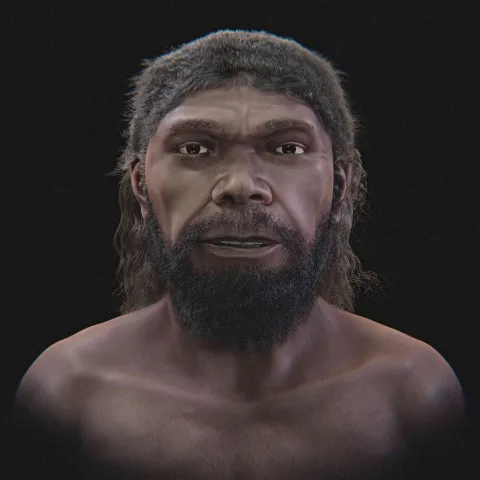
To reconstruct the face of the oldest known human, Cicero Moraes employed various techniques such as anatomical deformation. He mapped the 3D skull diagram onto a prototype skull model, using an adult male with a low body mass index as the basis. Moraes chose to depict a male face for the skull, emphasizing its robust and masculine characteristics.
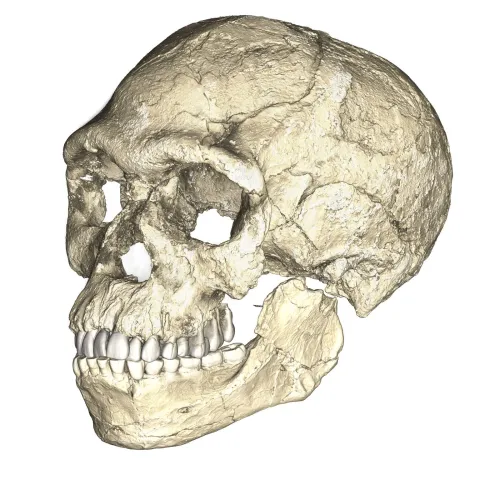
To produce the reconstructed face of the oldest known human, Cicero Moraes utilized additional data from modern humans to estimate the thickness of soft tissues and the projection of facial features like the nose. This process resulted in two sets of images: one focusing on technical details, devoid of hair and in grayscale, and another adding artistic elements with skin pigmentation and hair color. Moraes explained that the skull, composed of various fossil fragments, was meticulously reconstructed to form a cohesive anatomical representation.
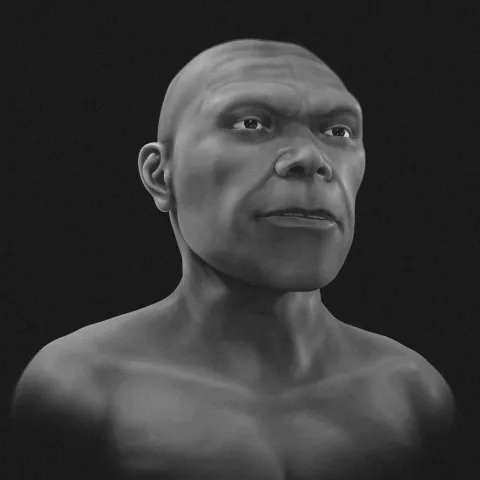
The Max Planck Institute noted that the Jebel Irhoud remains, which provided the skull data for reconstructing the oldest human’s face, exhibited a modern-looking face and teeth alongside a more archaic-looking braincase.
According to the institute, genetic changes affecting brain connectivity, organization, and development contributed to the transformation of the braincase into the structure seen in present-day skulls.
Cicero Moraes concurred with this assessment and likened the Jebel Irhoud skull to that of an archaic Homo sapiens, pointing out its features that align with extinct human relatives such as Neanderthals or Heidelbergensis.
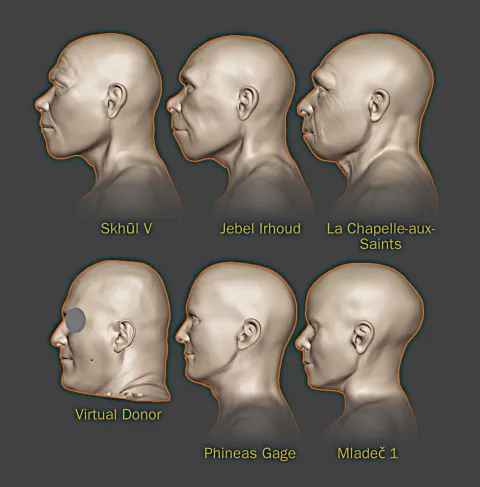
It’s intriguing to observe the distinctions and similarities in the structures of these skulls and faces across millennia. Initially thought to be approximately 40,000 years old, fossils from the Jebel Irhoud site were reevaluated using new techniques, revealing an age of around 300,000 years.
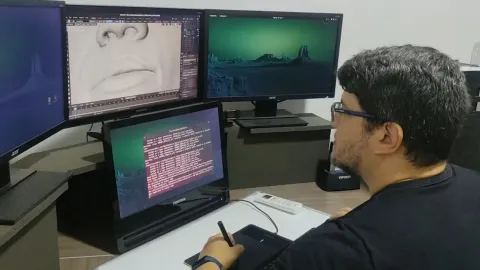
Jean-Jacques Hublin from the Max Planck Institute noted that Homo sapiens actually spread across the entire African continent even earlier, approximately 300,000 years ago, challenging previous beliefs about the cradle of mankind being in East Africa around 200,000 years ago. This discovery surpasses the previously oldest known Homo sapiens remains found in Omo Kibish, Ethiopia, which date back approximately 195,000 years.